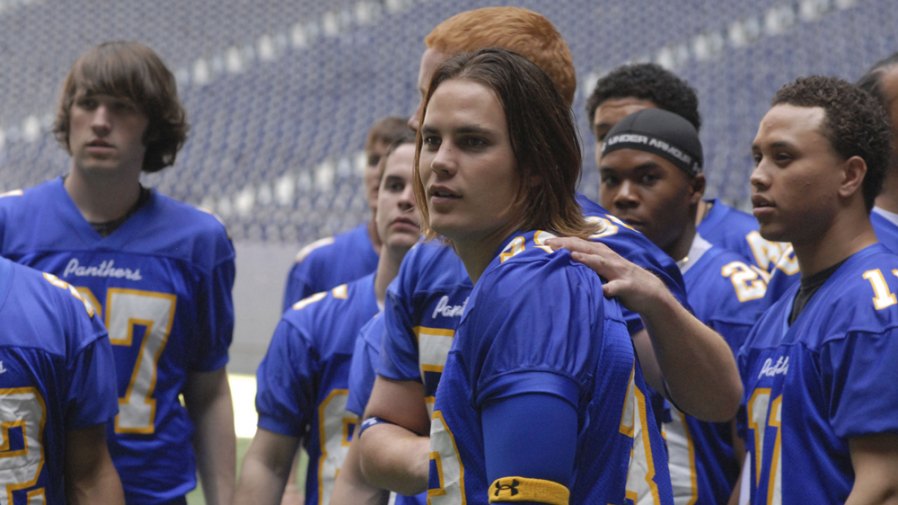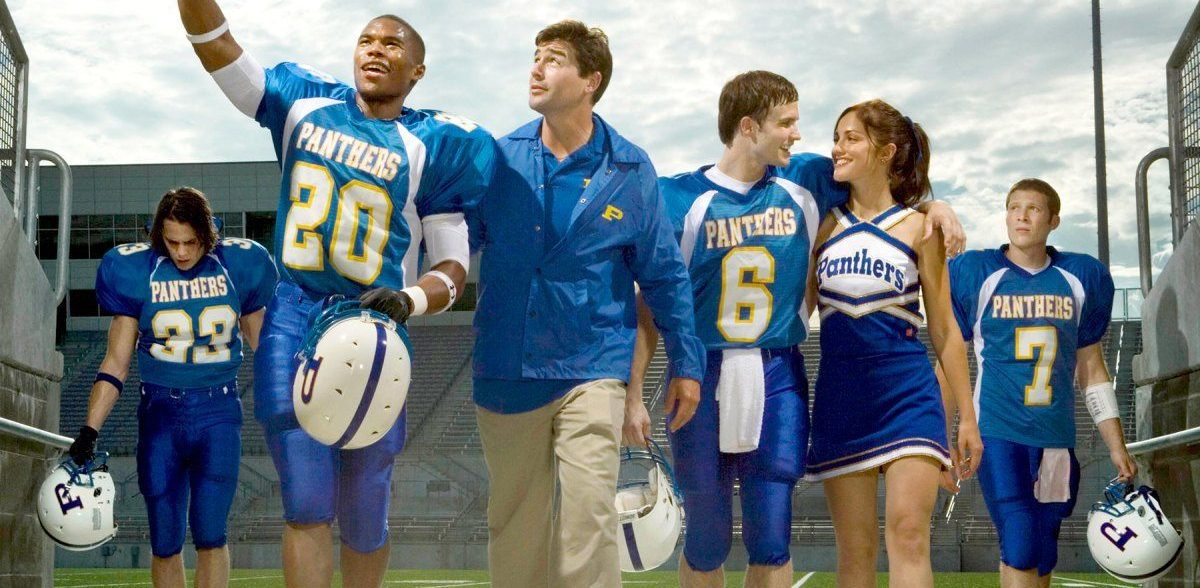‘Friday Night Lights’ is a sports drama series that revolves around a high school football team from rural Texas. It is developed for television by acclaimed filmmaker Peter Berg (‘Lone Survivor‘) and explores the various issues that dominate the lives of a close-knit football-crazy community. The show aired from 2006-2011 and is known for making actors such as Taylor Kitsch, Michael B. Jordan, Adrianne Palicki, and Jesse Plemons household names.
It has received critical acclaim due to its realistic handling of issues such as drug abuse, alcoholism, racism, abortion, criminal activities, unemployment, and its portrayal of contemporary American culture and values. Therefore, viewers must be curious to find out whether the series is inspired by any true events or real-life stories. If you are wondering about the same, allow us to share everything we know in that regard.
Is Friday Night Lights Based on a True Story?
No, ‘Friday Night Lights’ is not based on a true story. However, the series isn’t entirely devoid of real-world influences. The series is based on H. G. Bissinger’s non-fiction novel titled ‘Friday Night Lights: A Town, a Team, and a Dream.’ The book chronicles the story of the Permian High School Panthers football team from Odessa, Texas, who went to the 5A division playoff semi-finals during the 1988 high school football season. It also explores life in Odessa and the importance of football to the local community.

Bissinger has revealed that the idea for a high school football-based novel came to him on a cross-country trip after he saw various high school football stadiums. “It just struck me in my heart that these simply aren’t stadiums; these are shrines to people’s hopes and dreams on a Friday night,” the writer told Bleacher Report. After some searching, Bissinger settled on the town of Odessa to research for his novel and lived there for a year from August 1988 to August 1989.
The book was adapted into a feature film also titled ‘Friday Night Lights‘ by director Peter Berg. The movie achieved critical and commercial success, which led to the birth of the television series. While both the novel and the film feature real names, locations, and incidents, the television series is only similar to them in spirit and largely tells a fictional story. However, various characters share traits with characters from the film, who are based on real people. Therefore, it is safe to say that the series takes some inspiration from reality, albeit indirectly.
Peter Berg has shared in an interview that while making the film adaptation, he found it difficult to do justice to the various issues covered in Bissinger’s novel and wanted to explore them in-depth, leading to the idea of the television series. While developing the film, Berg spent a lot of time absorbing the culture of local communities in Texas, and his experiences during this time also helped in shaping the show.
The series is primarily set in the rural town of Dillon, Texas, which is a fictional town with some similarities to Odessa. The pilot episode of the series features many references to Texas culture. The Dillon Panthers football team, which is the focus of the series, was likely named after the Pflugerville Panthers, the football team of Pflugerville High School. The uniforms of the players and coaches of the fictional team are also based on those of the Pflugerville Panthers, and filming often took place at the real school’s grounds.
The initial arc of the character of Jason Street is inspired by a real high school football player named David Edwards from Madison High, San Antonio. During a football game in 2003, which Berg attended, Edwards suffered a spinal injury that paralyzed him. A similar incident takes place with Street in the pilot episode. However, Street’s arc after his injury is mostly fictional and focuses on his attempts to create an identity for himself after his promising football career ends prematurely.
This is a perfect example of how basing the characters in fiction allows the show to tackle relatable real-world issues. Bissinger’s novel wasn’t well-received in Odessa due to its seemingly negative portrayal of the local community. The makers of the show likely decided to use a fictional setting to avoid such a situation. Ultimately, using a fictional setting and characters allows the show to free itself from the constraints of adapting a true story. It also helps in creating an emotionally resonant narrative that is timely and tackles the various themes and subjects of the novel without deterring from the spirit of the source material.
Read More: Best Football Movies & Shows on Netflix


You must be logged in to post a comment.